What Are Content Buckets?
Content buckets are different categories or content types used to organize content. Which makes it easier to come up with new ideas, maintain consistent messaging, and include variety that keeps your audiences engaged.
They're different from content pillars. Which are the overarching topics your brand covers.
But content buckets help you create different types of content to cover your content pillars from different angles.
For example, digital marketing is one of our content pillars. And one way we cover it is through an education content bucket.
Like this blog post:
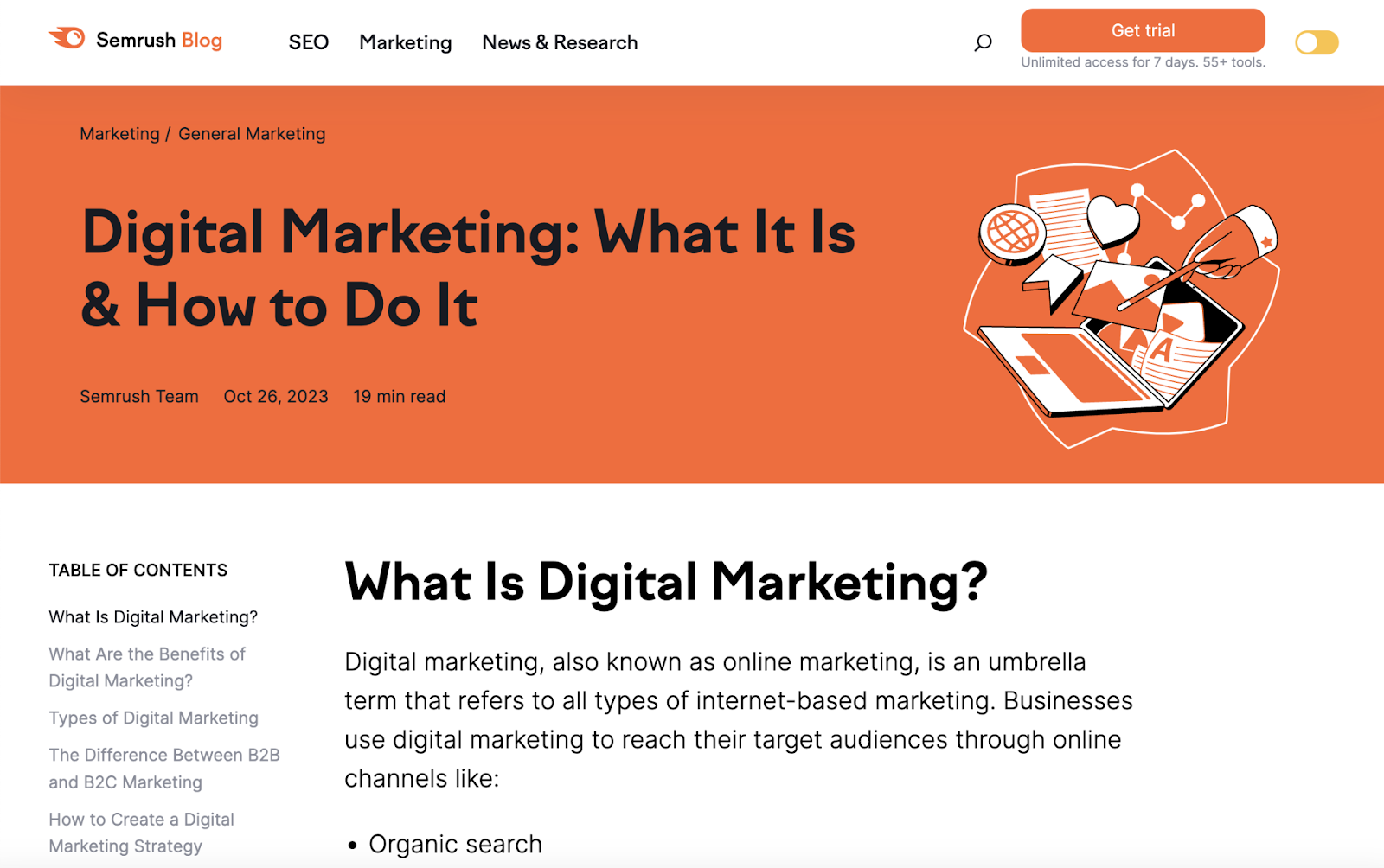
But content buckets can also be highly specific to you. Like if you’re a beauty brand and want to feature weekly social posts dedicated to fun nail polish designs.
How Can Content Buckets Help Your Content Strategy?
Content buckets support your content strategy by helping you break down the broad topics you want to cover in a structured way.
The main benefits include helping you:
- Stay organized. Using predefined buckets helps you manage your content calendar as they make it easy to come up with new ideas.
- Engage your audience. Posting varied content ensures your audience doesn’t get bored with similar content topics, formats, or angles.
- Maintain consistent messaging. Breaking down broad topics into buckets keeps you from getting lost in subtopics and themes that may be irrelevant to your brand.
6 Types of Content Buckets (with Examples)
Let’s explore six types of content buckets you can use across your chosen platforms.
Educational Content
An educational content bucket positions your brand as a go-to resource your target audience can turn to when they need to learn something.
This content can be a YouTube tutorial video, a how-to blog post, a detailed infographic shared on social media, a downloadable template, and so on.
For example, Preply publishes actionable tips on how to speak business-focused English on its YouTube channel.

Entertainment Content
Entertainment content can be lighthearted, funny, nostalgic, and/or celebratory. And tends to evoke positive emotions that help build relationships.
It can include memes, industry-relevant jokes, reactions to relevant pop culture trends, holiday-focused content, and more.
We frequently use this content bucket on social media to share relatable posts that allow us to share some laughs with fellow marketers.
Like in this Instagram post:
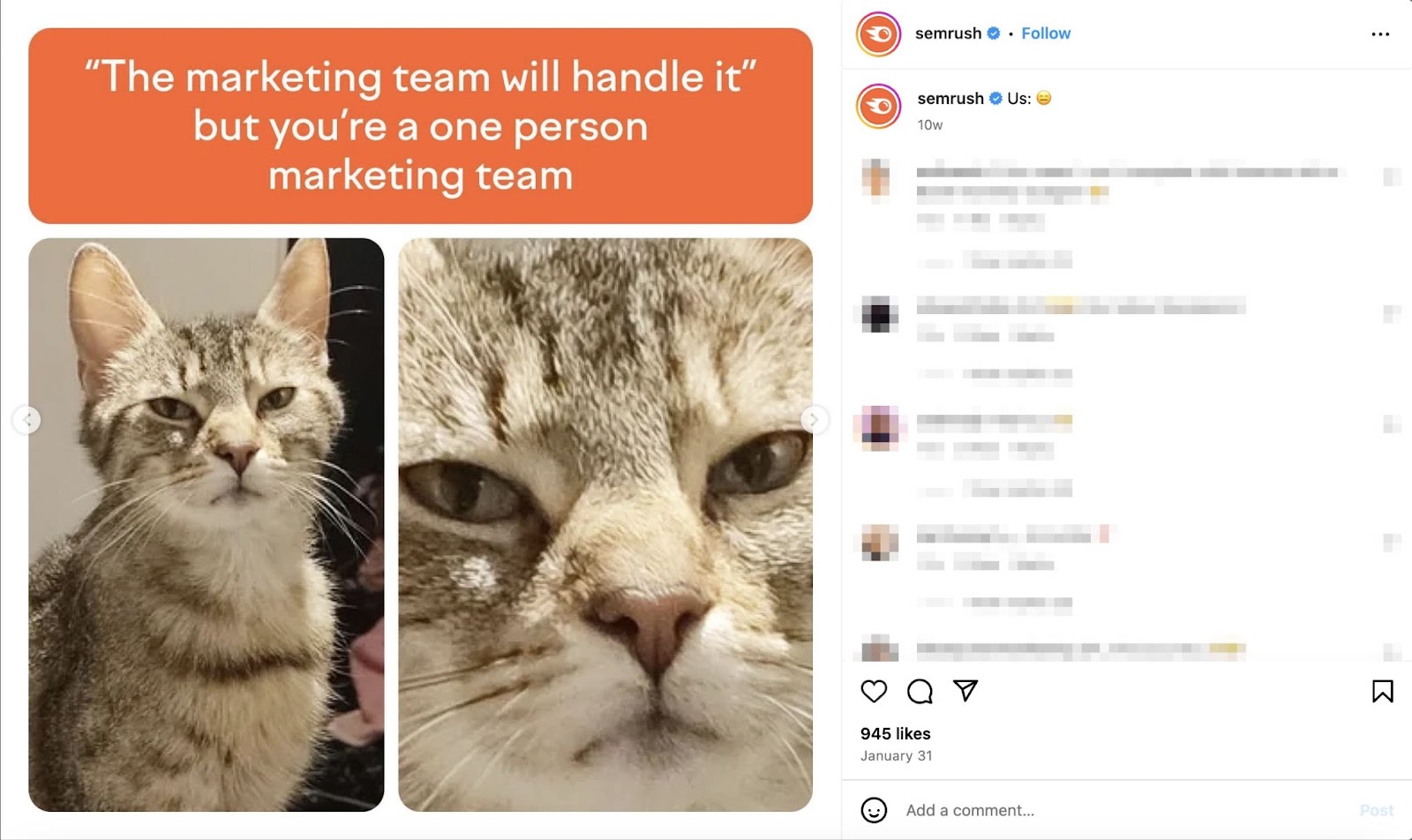
Personal Content
Personal content is designed to help creators and brands connect with their audiences and build relationships with them. By sharing aspirations, lessons, challenges, and mistakes.
Personal content helps others relate to you but is more serious than entertaining content.
Some examples are live Q&As, behind-the-scenes videos, text-based social media posts that share personal stories, etc.
For example, freelance content writer Lucy Jones shares her thoughts about having ADHD on LinkedIn. And that helps her connect with folks who may be experiencing something similar.
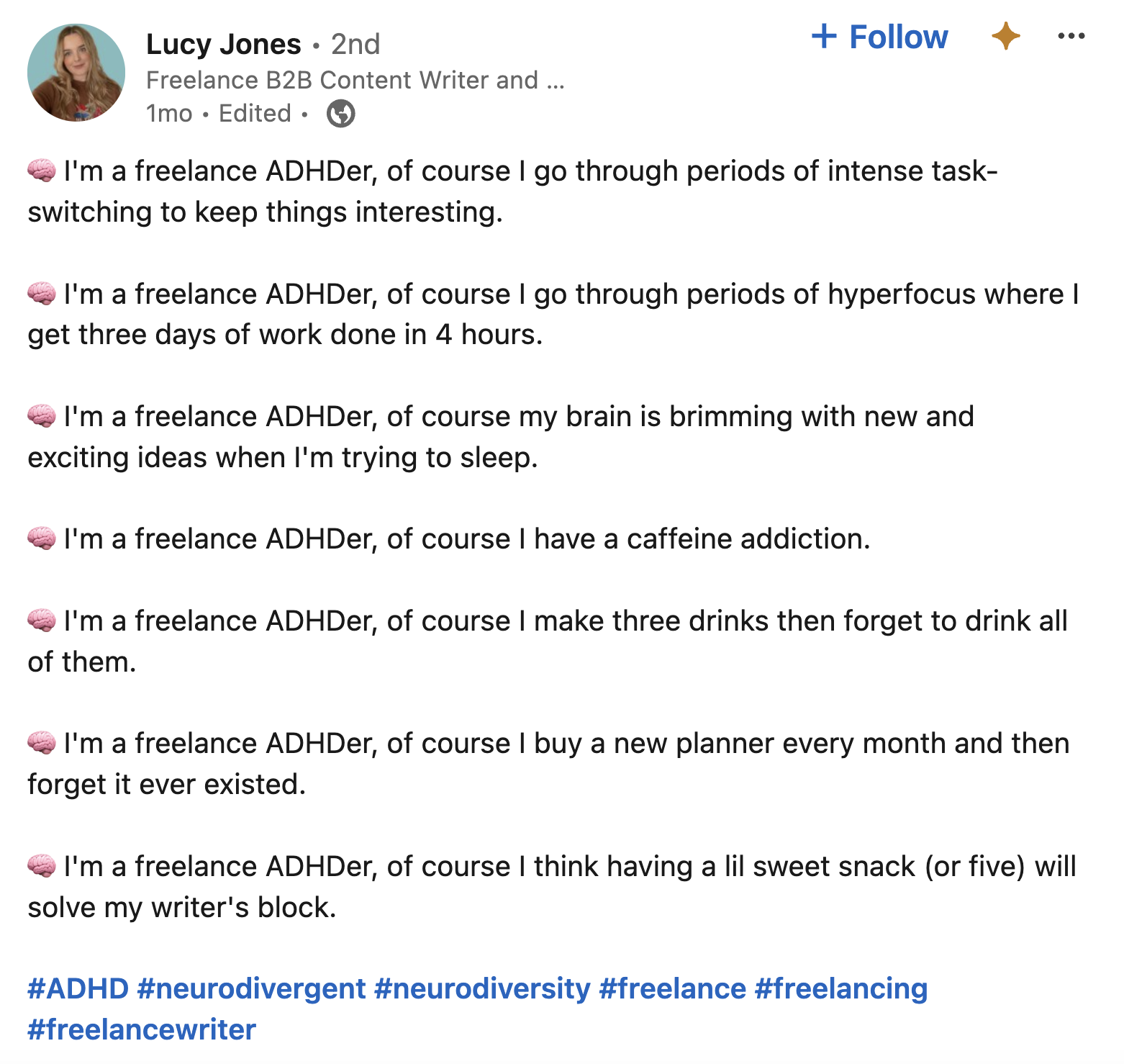
Promotional Content
Promotional content is used to draw attention to your content, products, or services. And encourage your audience to take action—purchase, sign up, download, etc.
This type of content includes product announcements, mentions of service upgrades, report releases, and more.
Just don’t forget to alternate promotional content with other content to avoid burdening your audience with overly sales-focused messaging.
Here’s an example of an Instagram post from L’Oreal that directly promotes their products.
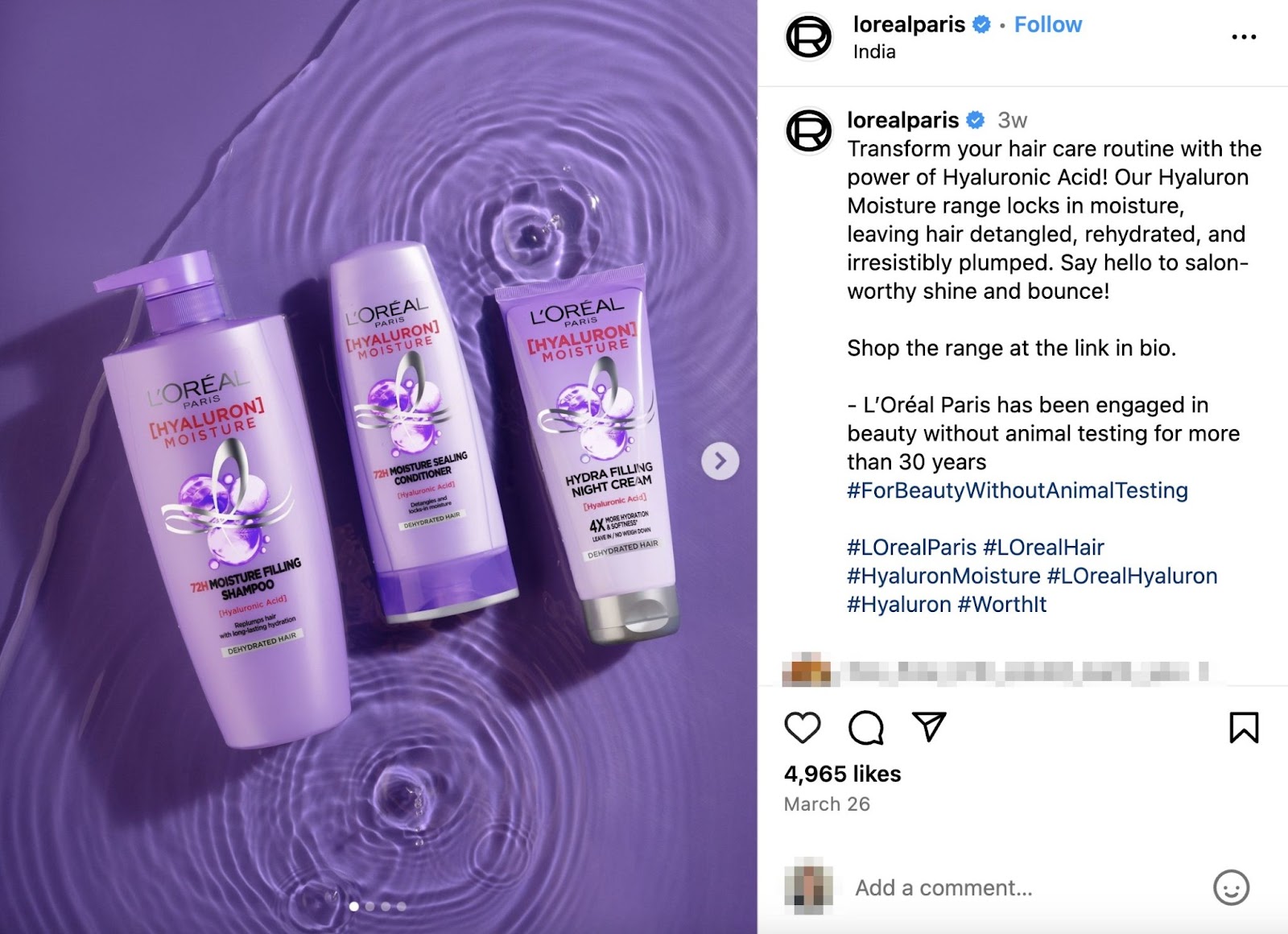
Inspirational Content
The inspirational content bucket is meant to motivate your audience to achieve their aspirations. Ideally, the ones that your products/services help them achieve.
Inspirational content includes success stories, motivational quotes and stories, anecdotes, personal growth tips, and more.
Here, Duolingo uses an inspirational YouTube video to show how their app helped an advertising professional overcome the fear of speaking English.
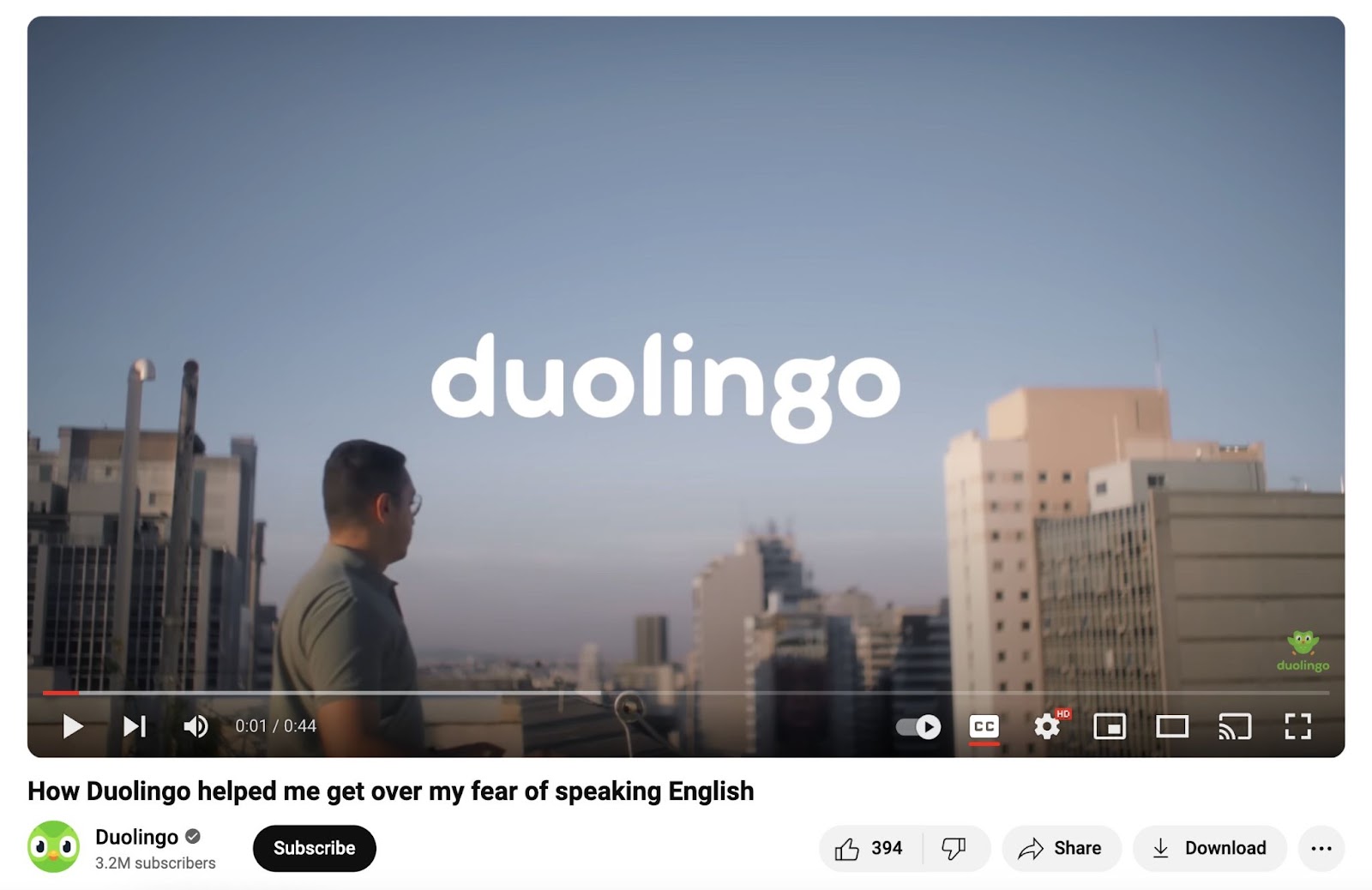
User-Generated Content
The user-generated content (UGC) content bucket includes pieces your customers create and share on their channels. They might do this organically or if you entice them to leave a review.
Some examples of UGC content are text-based customer reviews with images, video unboxings, articles about you on your customers’ sites, and more.
You can make the most out of UGC content by reposting content your customers create on your channels or embedding it on your site.
For example, skin care brand SOSU Cosmetics embeds UGC on their site.

And reposts it on their social media channels. Like this video on TikTok:
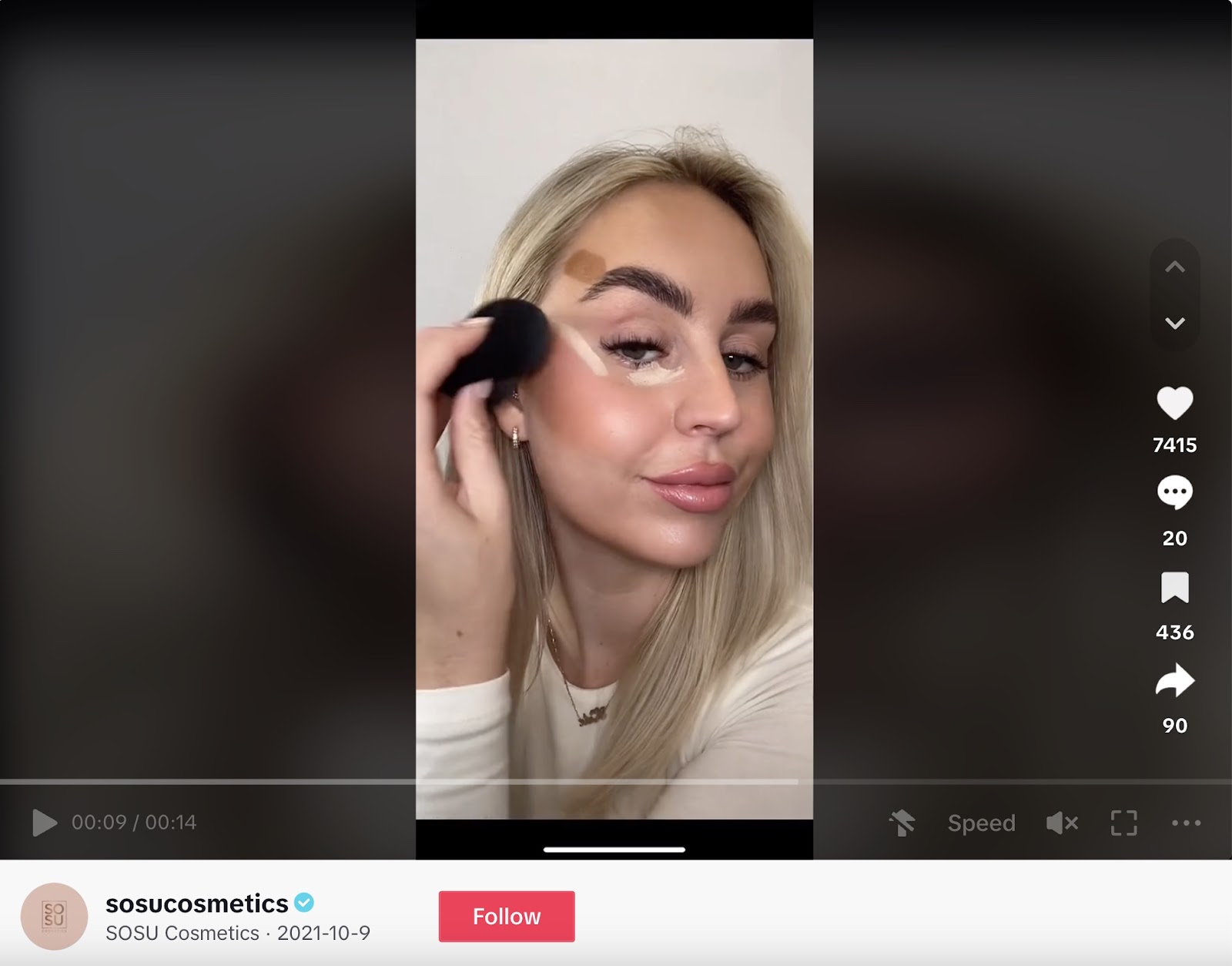
How to Start Using Content Buckets
Do Audience Research
Audience research will help you understand who you’re speaking to, and which platforms are best for reaching them. So you don’t waste time and resources on channels that your potential customers aren’t paying attention to.
One2Target can help you get started with the right platforms by seeing which ones your competitors’ audiences use.
Go to the tool, enter up to five competitors, and click “Analyze.”
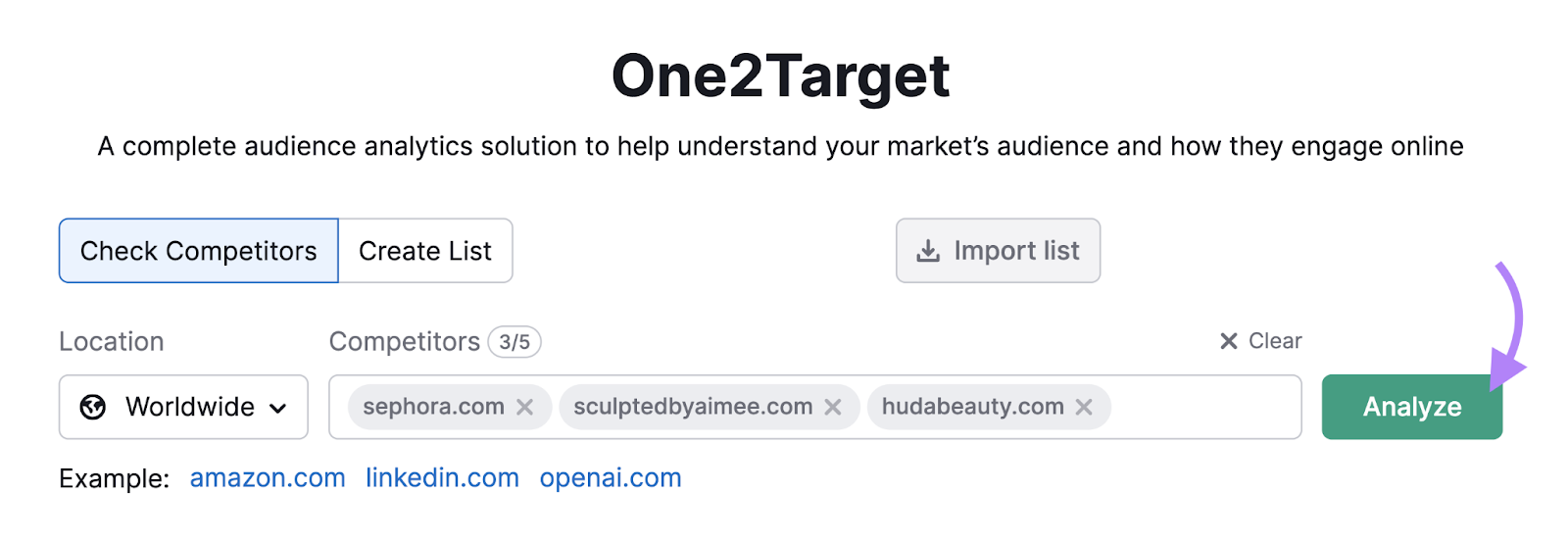
The tool will first show you the basic demographics of your competitors’ audiences. Like their age, gender, location, and more.
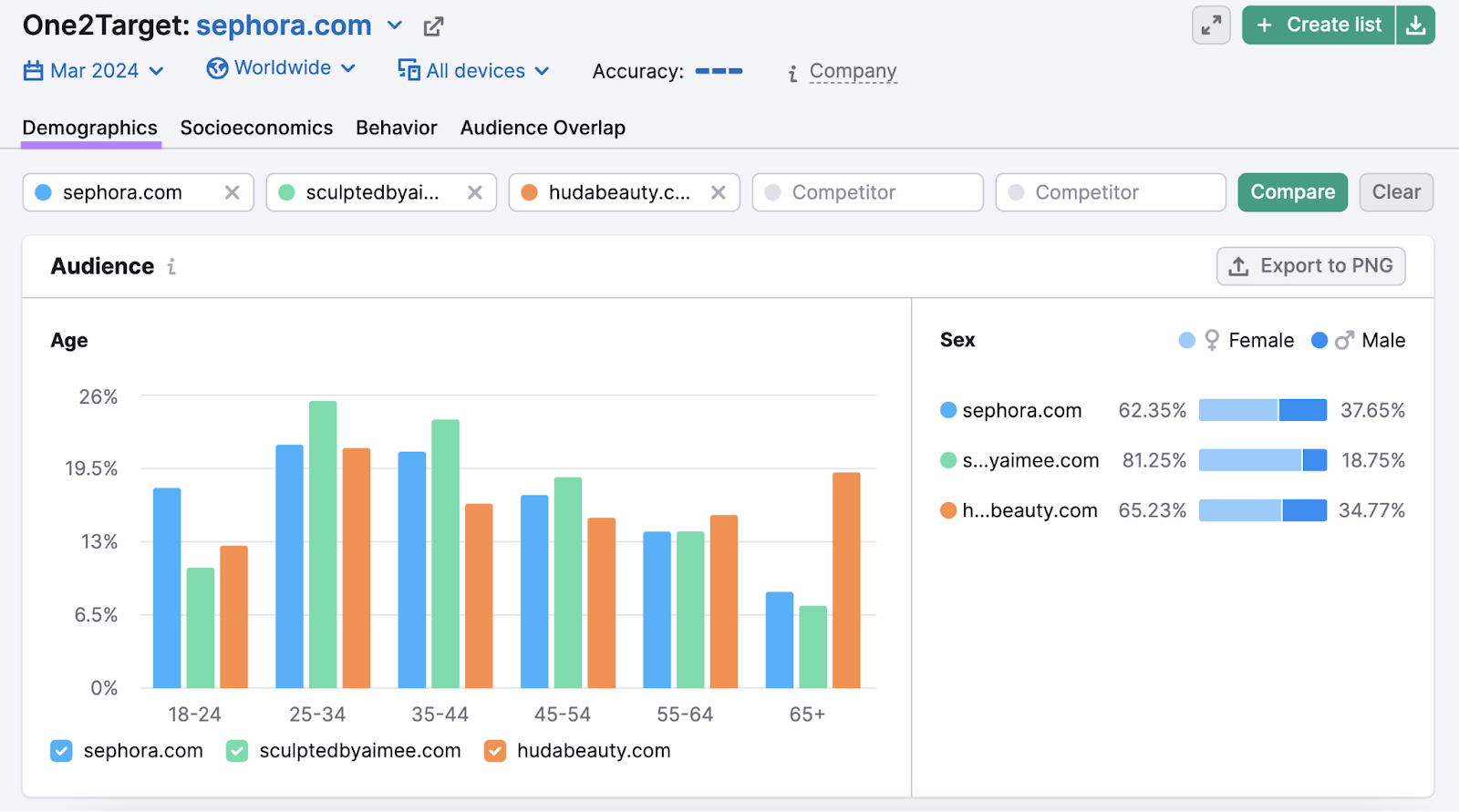
To learn more about where they hang out online, click “Behavior.”
You’ll now see a breakdown of their favorite social media platforms.
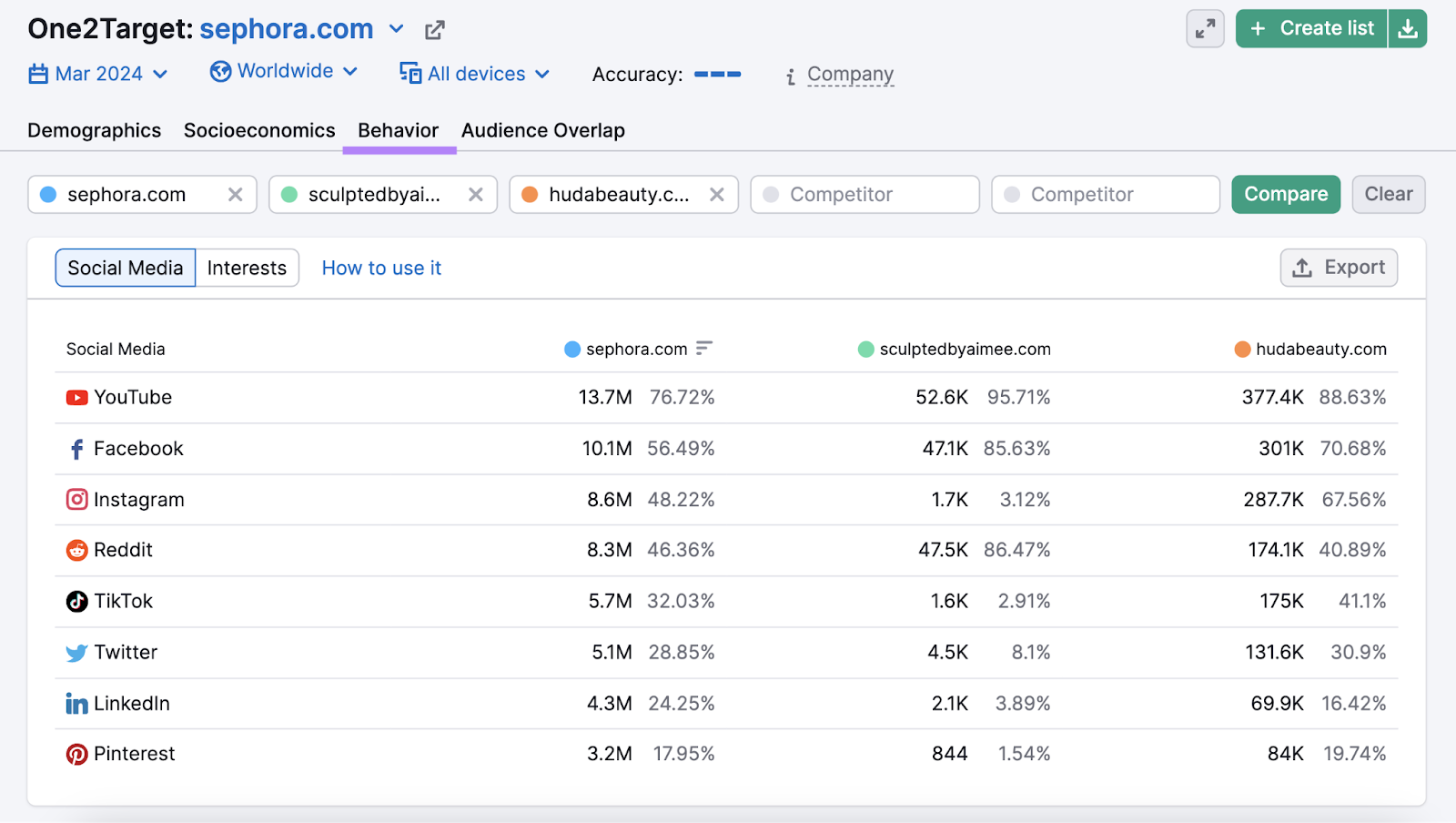
This information can help you choose a few channels to focus on.
Brainstorm New Ideas
Content brainstorming will help you come up with a wide range of content ideas you can later group into buckets and publish.
Use Topic Research to get started.
Enter a topic related to your brand and click “Get content ideas.”
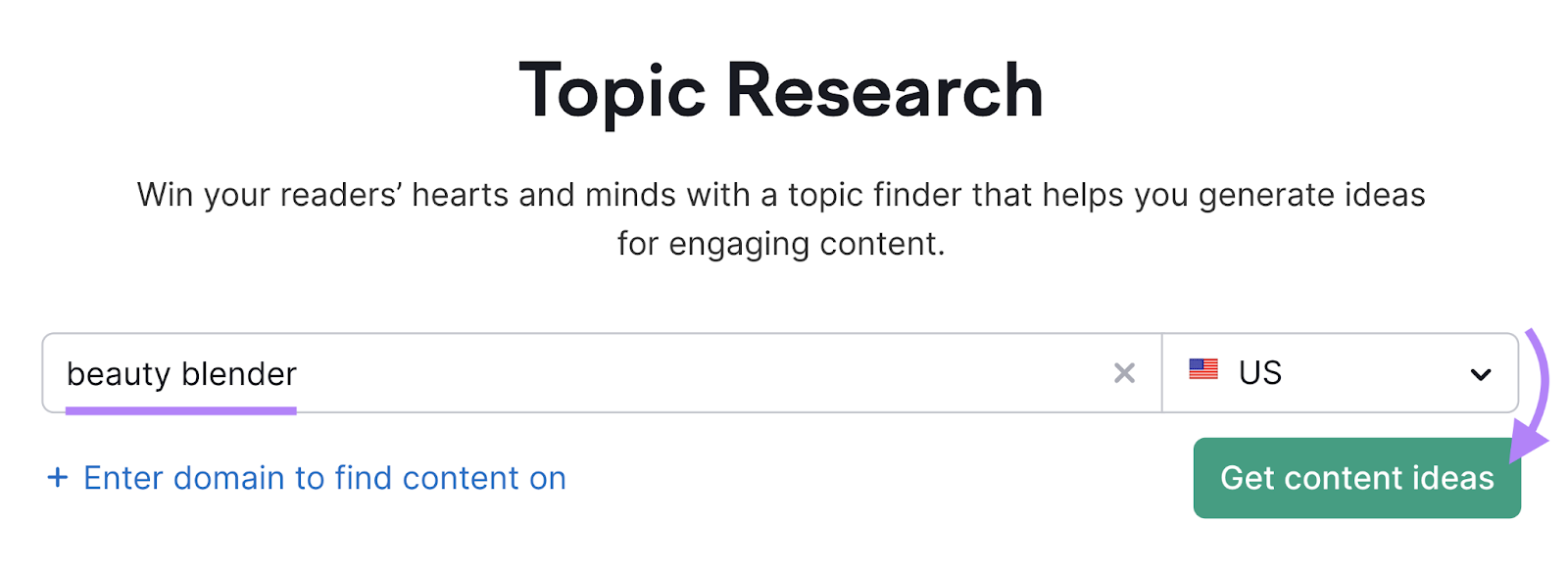
The tool will generate fresh ideas based on that topic and display them as cards.
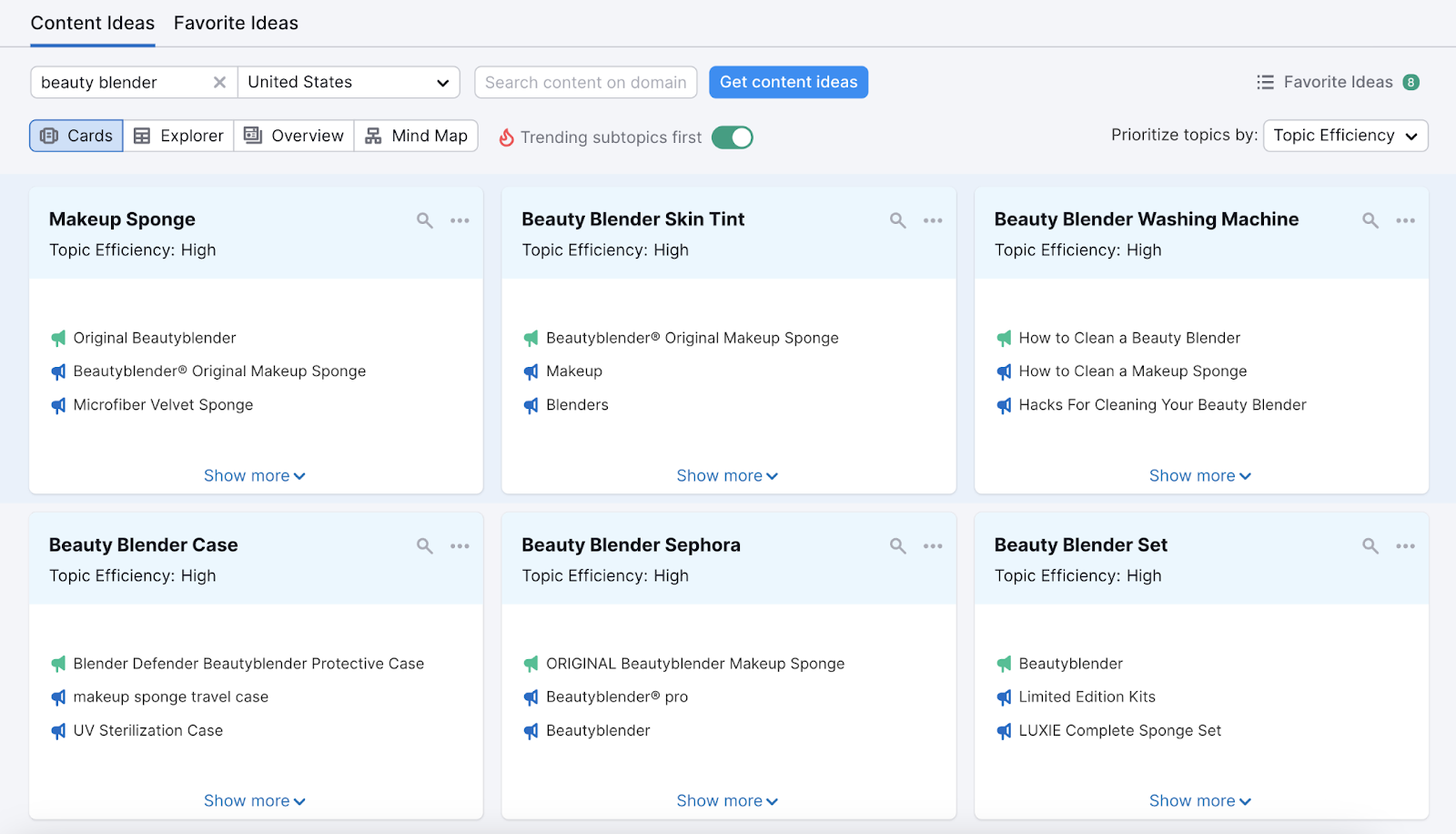
Click on one of the cards you’re interested in to see popular headlines on the topic and questions users often type into search engines.
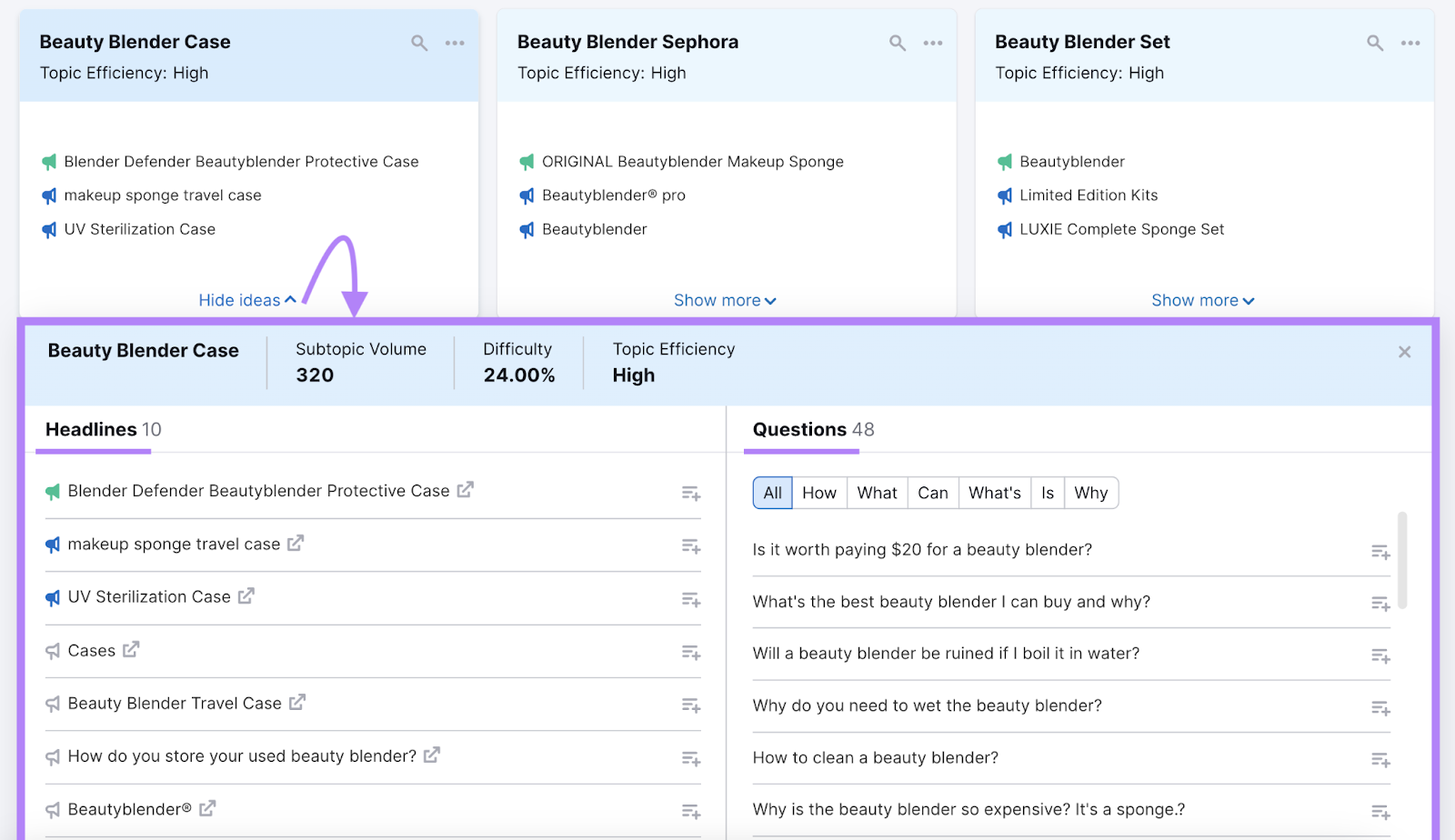
As you review the cards, think about what types of content would be suitable for each idea you’d like to cover. Because this will inform your bucket choices.
For example, you may see several topics that would work well as long blog posts that dive deep into the topic and can then be summarized as tip lists on social media (which would fall under an educational bucket).
Others might work best solely as funny social media posts (the entertainment bucket).
Define Your Buckets and Plan a Calendar
Review all the content ideas you sourced in the previous steps and the platforms you chose to focus on. And look for overarching themes that enable you to group content into buckets.
You should also evaluate the content you’ve already created to see what themes emerge from those pieces.
At this point, you can define a few main content buckets. And then add more as you need them later on.
The content bucket examples we covered earlier in this article are some of the most popular ones. But that doesn’t mean they’ll all align perfectly with your brand. Or that you can’t have more.
You may need to define some very specific buckets depending on your brand and audience.
For example, this marina has a “catch of the day” content bucket. But that one will only apply to brands that have something to do with fishing.

After defining your content buckets, it’s time to start planning out your calendar. And mixing in different types of posts to keep your audience engaged.
Start Creating Your Content Buckets Today
Content buckets can make content creation easier, faster, and more consistent.
And you can get started right away.
Check out Topic Research, which will generate fresh ideas based on a single topic. And help you define your content buckets.
Sign up for a free Semrush trial today to start exploring this and other tools.
